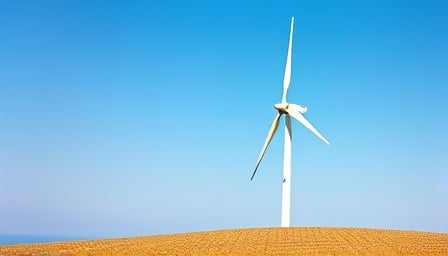Orsted AS Faces Financial Challenges Amid U.S. Wind Power Project
Orsted A/S, a leading company in the development and operation of offshore wind farms, bioenergy plants, and waste-to-energy solutions, is currently navigating significant financial challenges. The company, which operates in the utilities sector with a focus on electric utilities, has seen its shares plunge as it seeks to raise $9.4 billion to support its U.S. wind power projects.
Market Reaction and Analyst Downgrades
The Danish company’s shares experienced a sharp decline, dropping by 30% in European markets following the announcement of an 8 billion euro capital increase. This move is primarily aimed at addressing the financial needs of its halted projects in the United States. The market’s reaction was swift, with several financial analysts adjusting their outlooks on Orsted’s stock.
- Oddo reduced its target price for Orsted to 260 Danish kroner from 310, maintaining a neutral stance.
- SEB lowered its target to 225 Danish kroner from 300, continuing to recommend holding the stock.
- Citigroup cut its target to 190 Danish kroner from 211, reiterating a sell recommendation.
- Goldman Sachs adjusted its target to 235 Danish kroner from 300, keeping a neutral rating.
- Arctic downgraded Orsted to sell from hold, setting a target price of 180 Danish kroner.
Capital Increase and Strategic Adjustments
Orsted’s decision to raise capital through a rights issue of 60 billion Danish kroner underscores the financial pressures it faces, particularly due to policy shifts in the U.S. that have impacted its wind power projects. The company’s strategic pivot involves issuing more stock rather than divesting a stake in a U.S. offshore wind farm, a move that has contributed to the significant drop in its share price.
Equinor’s Position
Equinor, a major stakeholder in Orsted, has indicated that it will “carefully evaluate” the announced capital increase. This cautious approach reflects the broader uncertainty and scrutiny surrounding Orsted’s financial strategy and its implications for investors.
Conclusion
Orsted’s current financial strategy, driven by the need to secure funding for its U.S. projects amidst regulatory challenges, has led to a turbulent period for the company. As it navigates these challenges, the responses from analysts and stakeholders like Equinor will be crucial in shaping its path forward. The company’s ability to manage these financial pressures while continuing its mission in renewable energy development remains a key focus for investors and industry observers.
